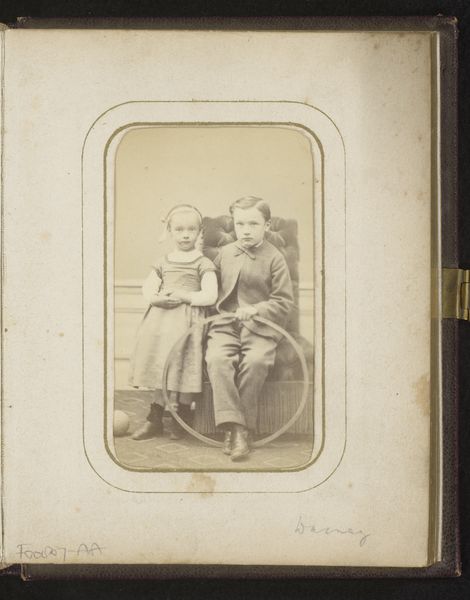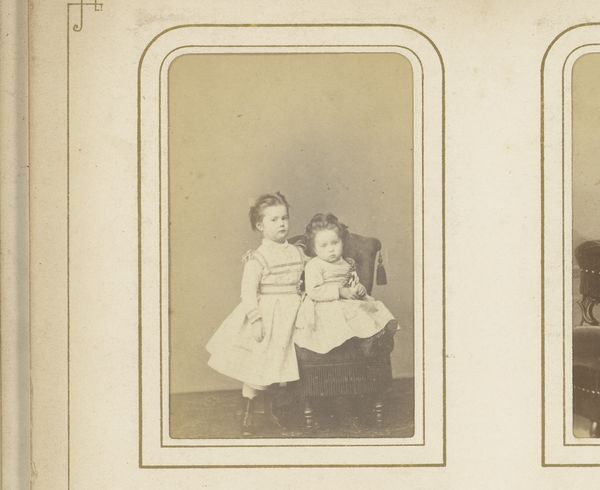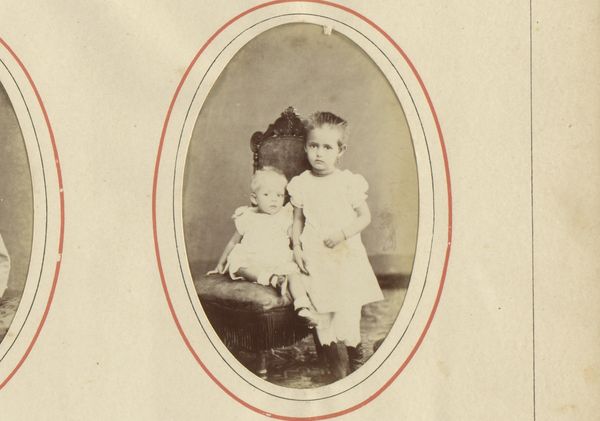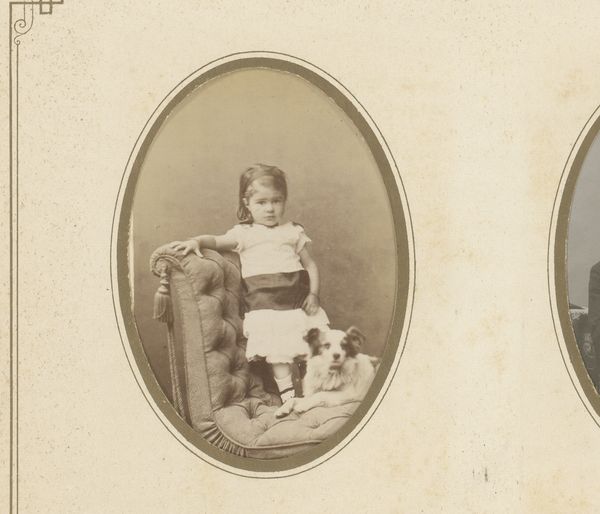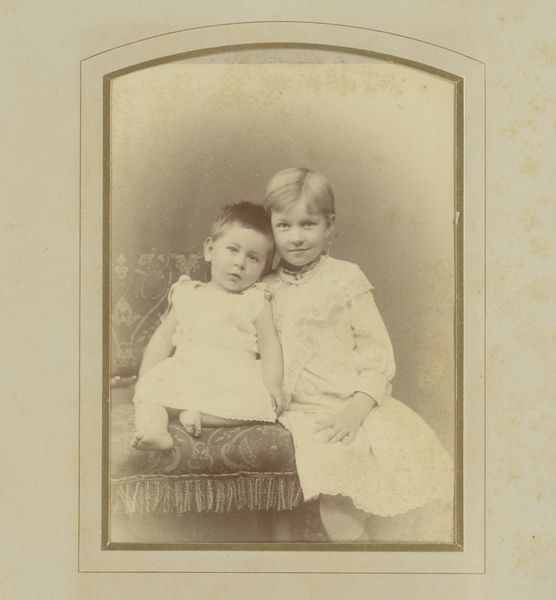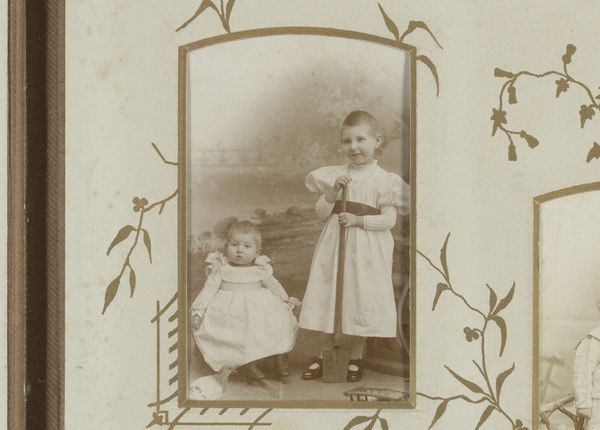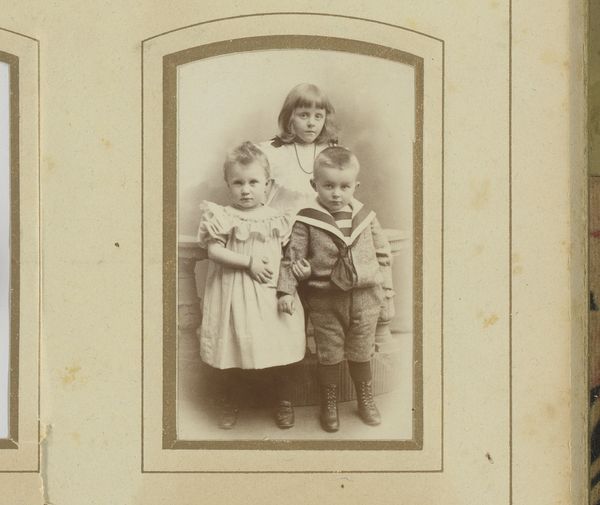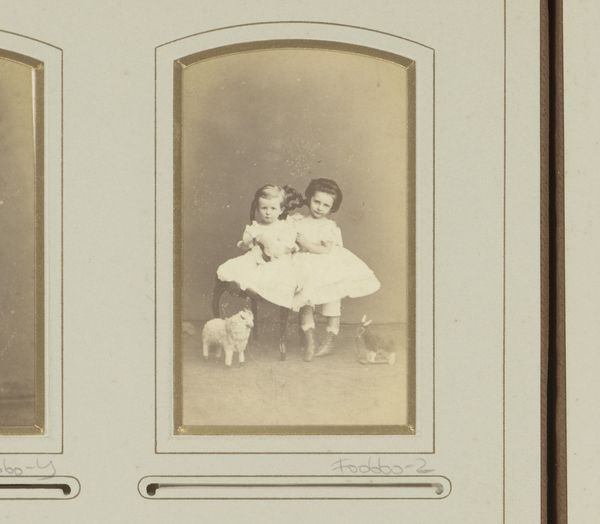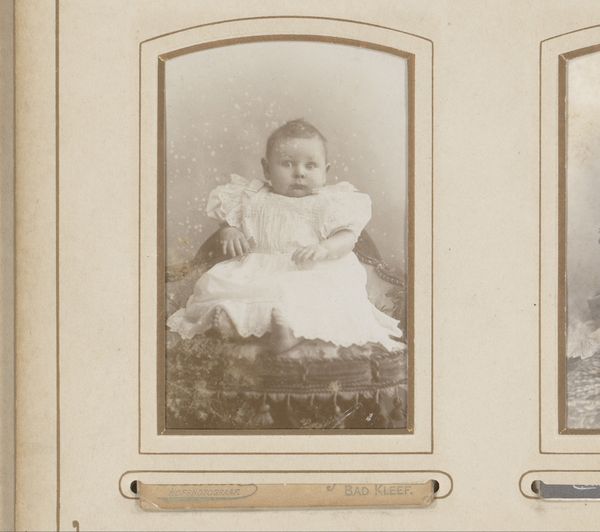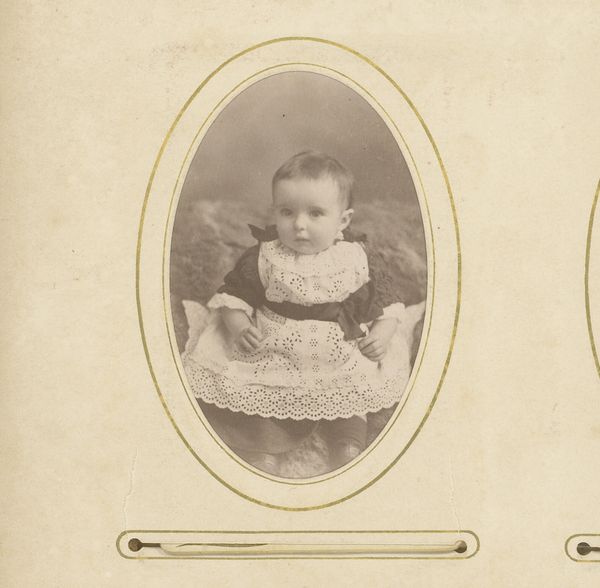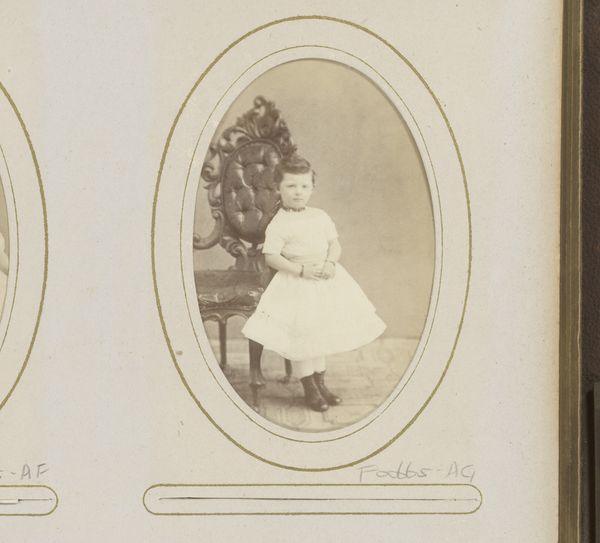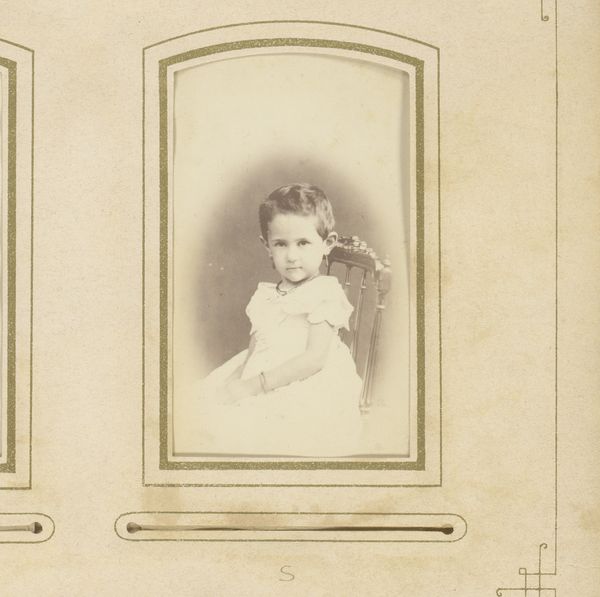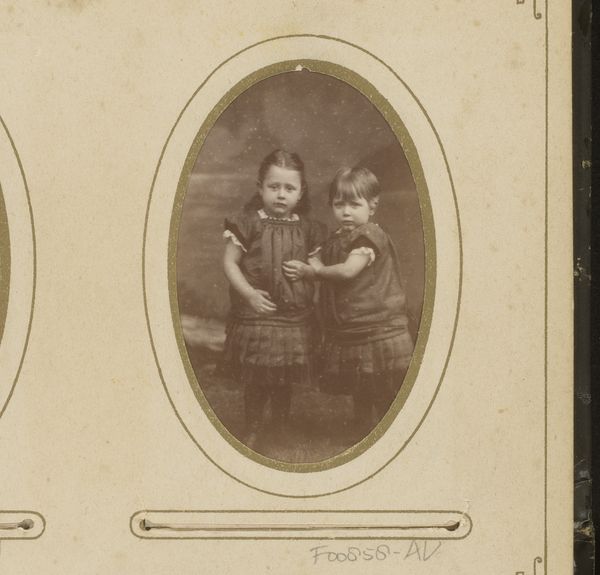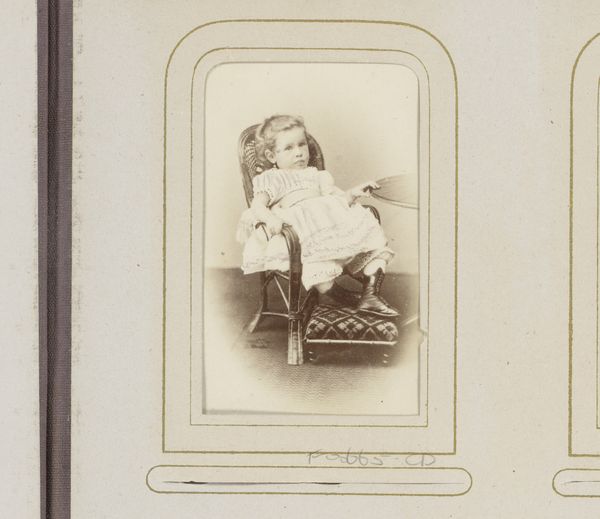
photography
#
photography
#
child
#
19th century
#
genre-painting
Dimensions: height 84 mm, width 51 mm
Copyright: Rijks Museum: Open Domain
Curator: This portrait captures two children, dating from approximately 1860 to 1880, created through photography by Wilhelm J. Grammann. Editor: Immediately, I'm drawn to the way the sepia tone lends such an antique gravity to the image, almost transforming the children into icons. Curator: The photographic portrait, specifically during this era, gains importance as we consider the evolving role of the family. This piece, viewed through a contemporary lens, speaks volumes about 19th-century conventions around childhood and identity formation, especially within a burgeoning middle class. How might we read their pose in terms of constructed social identities? Editor: Indeed. Their clothing choices, almost uniform, and the older child's hand resting on the younger’s chair carry deliberate weight. This evokes, for me, notions of protection, inheritance—not just material wealth, but familial legacy. Think of the countless depictions of children that aim to show not only family values but wealth and health. Curator: Absolutely. It brings up the question of representation—were the subjects aware of the narrative being crafted through this medium? How did it reinforce certain social norms regarding siblinghood and gender? Editor: The background, though minimal, casts them almost as secular saints—their faces haloed in the light. The fact that it is not stylized at all in the tradition of older visual imagery is quite revealing. This realism lends more power. Curator: Yes, there’s a certain austerity present that can be juxtaposed against romantic portrayals of children we see elsewhere in art from the same period. These elements ask viewers to consider power structures inherent within the family unit of the time and also hints at changing cultural values. Editor: Analyzing visual symbolism always opens fascinating pathways. Looking closer now at the frame, I perceive it adding an architectural dimension that underscores formality, inviting questions about how memory functions through curated representations. Curator: Thank you. Engaging with these kinds of historical depictions of family relationships helps us reflect on how identities are forged, both then and now. Editor: Precisely, reminding us how we've woven continuity across generations and mediums to shape cultural memory.
Comments
No comments
Be the first to comment and join the conversation on the ultimate creative platform.
